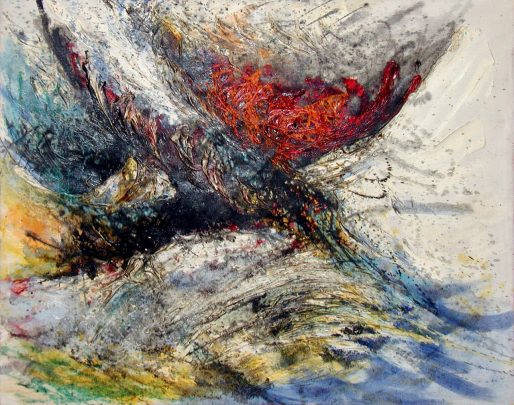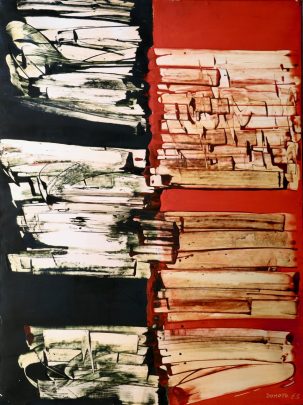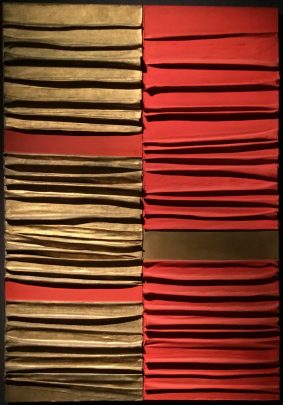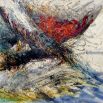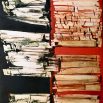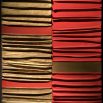堂本尚郎 DOMOTO Hisao 1928–2013
- 無題 1958年 油彩・キャンバス 81x100cm 販売済み
untitled 1958 oil on canvas 81x100cm sold
出展歴:1960年「日本人作家4人展」マーサ・ジャクソンギャラリー、ニューヨーク
Exhibition: 1960 'Japanese 4 Artists Exhibition' Martha Jackson Gallery, New York - 二元的なアンサンブル 1962-63年 グワッシュ・紙・メゾナイト・木製パネル 61x46cm
Ensembles Binaires 1962-63 Gouache on paper and masonite, laid on wooden panel 61x46cm - 連続の溶解 − 金と赤 1963年 ミクストメディア・キャンバス 130x90cm 販売済み
Solution de continuité - Gold and Red 1963 mixed media on canvas 1130x90cm sold
1928(昭和3)年京都市に生まれる。日本画家の堂本印象を伯父に持つ。1949(昭和24)年京都市立美術専門学校(現・京都市立芸術大学)日本画科を卒業。1955(昭和30)年に渡仏し、パリで洋画に転じる。今井俊満の紹介でミシェル・タピエと知り合い、アンフォルメルの美術家として認知されるとともに国際的に高い評価を受ける。また、タピエに具体美術協会の活動を紹介し、両者が接触する契機を作った。1962(昭和37)年を境にタピエから距離を置くようになり、いくつかの様式を経て、晩年は水墨画的な抽象世界を探求した。2001(平成13)年にフランス政府から芸術文化勲章オフィシエを授与され、2007(平成19)年には文化功労者に叙せられる。2013(平成25)年に東京都で亡くなる。
<「あの時みんな熱かった!アンフォルメルと日本の美術」展(2016年、京都国立近代美術館)図録より引用>
Hisao Domoto was born in Kyoto in 1928. His family had produced many artists and his uncle, Insho Domoto, was a well-known Japanese-style painter. Hisao made a spectacular debut in the world of Japanese-style painting, winning the Special Selection Prize in the Nitten Exhibition at the youthful age of 23. In 1952, while on a trip to Europe with his father, he decided to study in France. Moving to Paris alone in 1955, he switched from Japanese-style painting to oil painting. Art Informel was at the height of its popularity in Paris, and Domoto immediately began working in this style, quickly gaining attention as one of the principle figures of the movement. He eventually developed his own original style of painting while showing his work in both Paris and New York and his reputation grew as he participated in a number of international exhibitions. In 1967, he returned to Japan, setting up a studio in the Setagaya section of Tokyo. There he took up Japanese-style painting again, bringing fresh, new ideas to traditional media.
< from 'Hisao Domoto Retrospective' Setagaya Art Museum, Tokyo, 2005–2006 >
